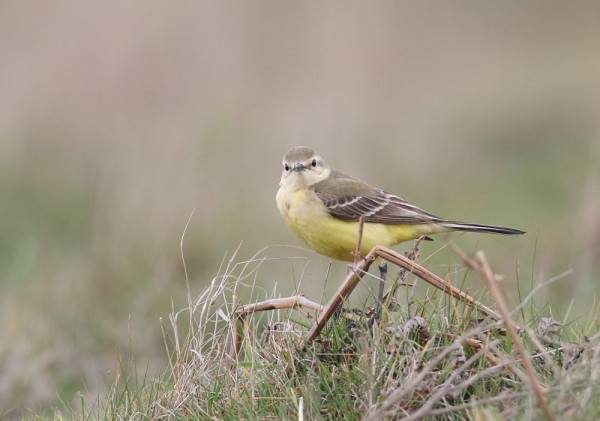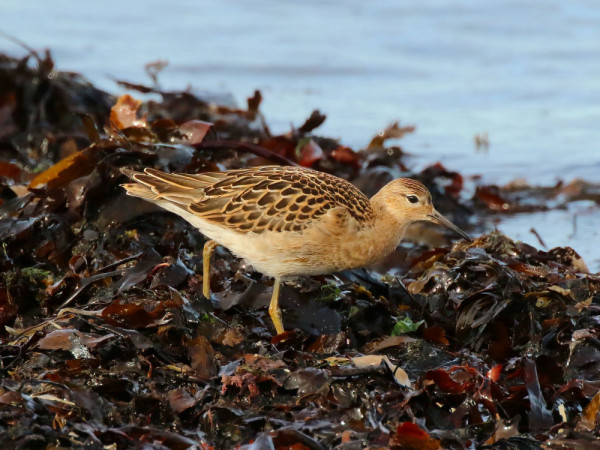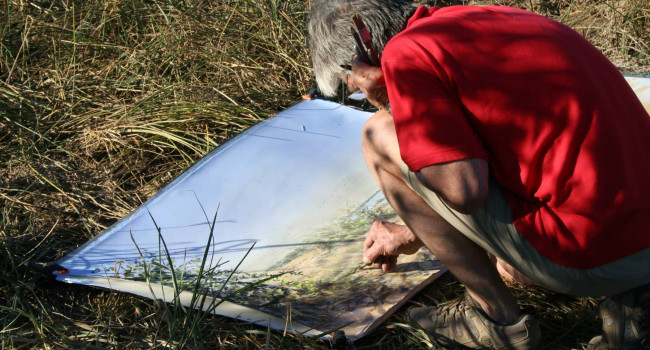
BirdTrack migration blog (26th August - 1st September)
Scott’s role includes the day-to-day running of BirdTrack: updating the application, assisting county recorders by checking records and corresponding with observers.
Relates to projects
Last week turned out to be similar to the one before, with a steady arrival of common migrant passerines such as Chiffchaff and Whitethroat. Pied Flycatcher had another bumper week with good numbers reported not only from coastal sites but also from further inland.
Waders and seabirds continued to be the focus for many, with Common, Green, and Wood Sandpipers all seeing an increase in reports over the last week. The first arrival of Little Stint also occurred, and small numbers were noted from a number of locations. This species was often seen associating with Dunlin, which are also on the move as the adults head for their wintering areas. The juveniles will follow in a couple of weeks.
The southwest saw the lion's share of seabirds, with good counts of not only commoner species such as Manx Shearwater and Fulmar but also of scarcer species including both of the large shearwaters, Cory’s and Great. The highlight for many would have been the relatively high numbers of Wilson’s Petrels that were reported from dedicated pelagic trips and also from headlands; sightings of this species seem to be increasing in recent years. And as suggested in last week's blog, the numbers of Balearic Shearwaters increased last week as birds began to gather in the Channel and along the South-western coasts ahead of their peak numbers in mid-September. These birds will be a mix of adults and this year's offspring that hang around the north Atlantic before heading back to the Balearic Islands to start breeding in late March/early April.
Rarities seen in the past week include a couple of Fea’s Type Petrel in Cornwall, Barolo-type Shearwater in Wexford, Greater Sandplover in Aberdeenshire, and Harlequin Duck from St Kilda.

Species focus - Wood Sandpiper
Wood Sandpiper is a rare breeding bird in the UK, with a handful of pairs occupying the areas in northern Scotland where the habitat is most similar to the rest of the species' breeding range, the boreal and sub-arctic zones of northern Europe. It is estimated that around 1.2 million pairs breed in Europe altogether. The species is also a scarce migrant that passes through the UK during both the spring and autumn migration periods, with many more birds arriving during the latter than the former. Most of the birds that occur here during autumn migration, which peaks in late August and early September, will be from the Scandinavian breeding population.
Numbers of Wood Sandpiper arriving in the UK can vary between years, as the majority of these birds migrate much further east than the UK. Although birds do turn up here every autumn, it is during periods of easterly airflow that higher numbers are seen. When westerlies dominate, Wood Sandpiper can be particularly scarce.
Wood Sandpiper is a long-distance migrant and for some of these birds the stopover in the UK is the first leg of a very long journey. Small numbers do overwinter in North Africa, but as the most widespread wintering Palearctic wader in Africa, some birds will spend these months as far south as South Africa.
As is to be expected, the east coast of the UK receives most records for this species, but Wood Sandpiper can and does turn up anywhere. There are lots of records from waterbodies far inland, so it is worth keeping your eyes and ears peeled.

Looking ahead
The weather at the time of writing looks to be dominated by easterly winds; these will start off light at the weekend and have more of a northerly element before becoming stronger and more easterly as we progress through next week. To many birders, this will be music to their ears as this type of weather is conducive to producing migrant birds along the east coast.
At this time of year common warblers such as Chiffchaff, Blackcap, Whitethroat, Lesser Whitethroat, Garden Warbler, Reed Warbler, and Sedge Warbler will make up the bulk of the species found, and in the case of Reed Warbler, they can often be found away from their usual reedbed habitat. Mixed in with these will be the inevitable scarcer species with Icterine, Barred, and Greenish Warblers all likely at this time of year. Many will be fresh juvenile birds undertaking their first migration. Other species to look out for include Pied and Spotted Flycatcher, Whinchat, Redstart, Wheatear, Tree Pipit, and Yellow Wagtail.

It is not just passerines to look out for, with terns, waders, and some raptor species either leaving Britain and Ireland or passing through as part of their migration. Whilst the main passage of both Arctic and Common Tern is over, Sandwich Terns will still be passing through in reasonable numbers (although the impact of Avian Influenza could result in lower numbers than expected), and mixed flocks of terns are always worth searching for scarcer species like Black or White-winged Black Tern.
Ruff, Ringed Plover, Curlew Sandpiper, Sanderling, and Spotted Redshank all have a peak reporting rate in early September and all are very good birds to find away from coastal locations - searching any inland waterbody could prove worthwhile. In the case of Spotted Redshank, many of the individuals seen at this time of year will be juveniles or adult males, as the females passed through a few weeks ago after leaving the parenting duties to the males.
Summer visiting raptors will also begin their migration with Hobby, Osprey, and Honey-buzzards leaving their breeding areas. These could be joined by birds from Scandinavia that drift across the North Sea, especially with the conditions forecast in the coming week.
All in all, it could be a good week for migration, especially if the forecast holds. Let us keep our fingers crossed - and don't forget to add your sightings to BirdTrack to help us monitor which species are on the move.
As Avian Influenza continues to impact the UK's birds, we watch for the arrival of migrants to our shores with a degree of trepidation...whatever the future holds, collecting data - where it can be carried out safely and without risk to birds - is vital, so please consider submitting your sightings to BirdTrack.
James Pearce-Higgins, Director of Science
Go to BirdTrack








Share this page